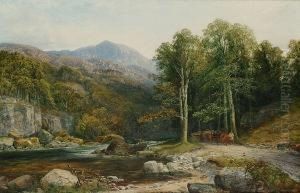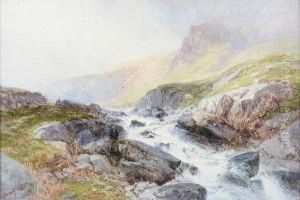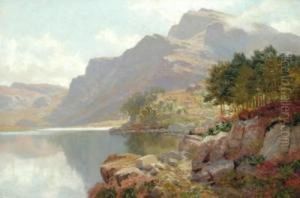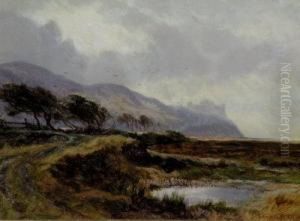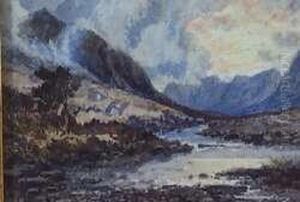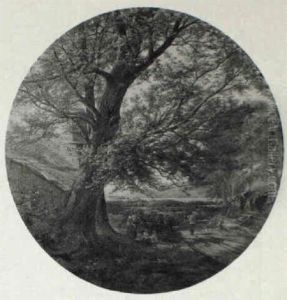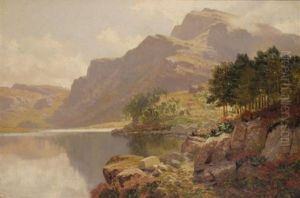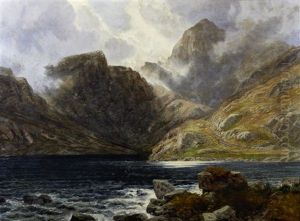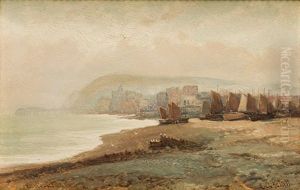Edwin Alfred Pettitt Paintings
Edwin Alfred Pettitt was an English artist known for his landscape and genre paintings. Born in 1841 in the United Kingdom, Pettitt became an active artist in the Victorian era, a period noted for its unique cultural, artistic, and political circumstances in Britain.
Pettitt's artistic journey reflects the broader trends and influences of the 19th-century art world. During this time, the art scene was dominated by the Royal Academy of Arts, and genre scenes as well as landscapes were highly popular among the British public and collectors. Pettitt, although not among the most famous artists of his time, contributed to the rich tapestry of Victorian art through his work.
Unfortunately, there is limited documentation on Pettitt’s life and training. It is known that he exhibited his work at various venues, including the Royal Academy, between 1863 and 1880. His paintings often depicted rural landscapes, everyday scenes of British life, and occasionally historical or literary themes, which were common subjects of interest during the Victorian era.
Pettitt's style would have been influenced by the dominant artistic movements of his time, including Romanticism, which emphasized emotion and individualism, as well as the Pre-Raphaelite Brotherhood, which advocated for a return to the detail, color, and complexity of Quattrocento Italian art. However, Pettitt's work did not strictly adhere to a single movement, and he is not widely known to have been a part of any specific school or group of artists.
Throughout his career, Pettitt enjoyed the patronage of the middle classes, who were increasingly becoming art consumers thanks to the growing economy and the expansion of the middle class. His works were accessible and appealing to this new audience, aligning with the Victorian taste for sentimentality and moral narratives.
Edwin Alfred Pettitt passed away in 1912, leaving behind a modest but meaningful body of work that offers insights into the preferences and aesthetics of the Victorian art market. While he may not have achieved the renown of some of his contemporaries, his paintings remain a testament to the diverse range of artists contributing to the rich cultural landscape of 19th-century Britain.
